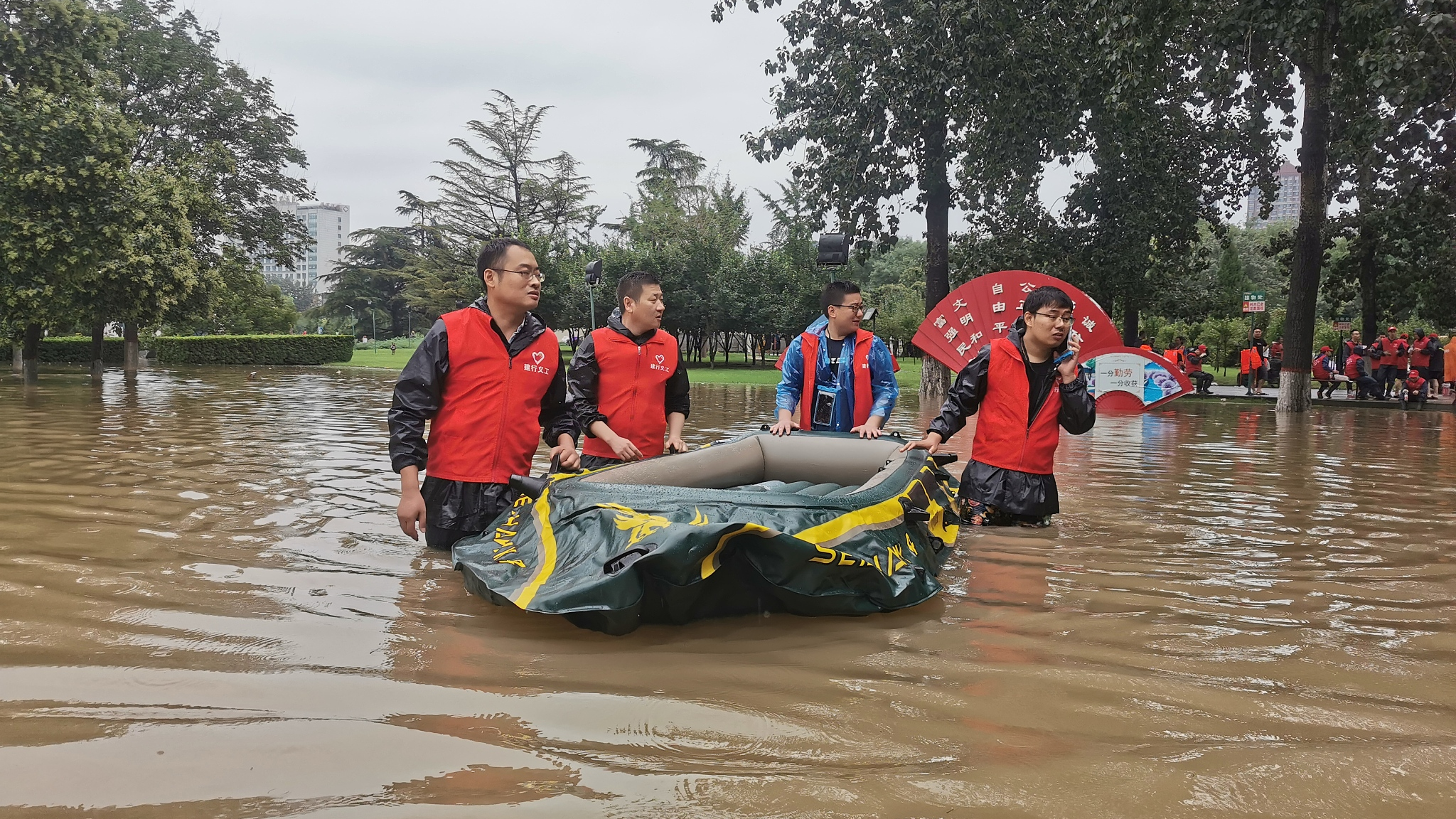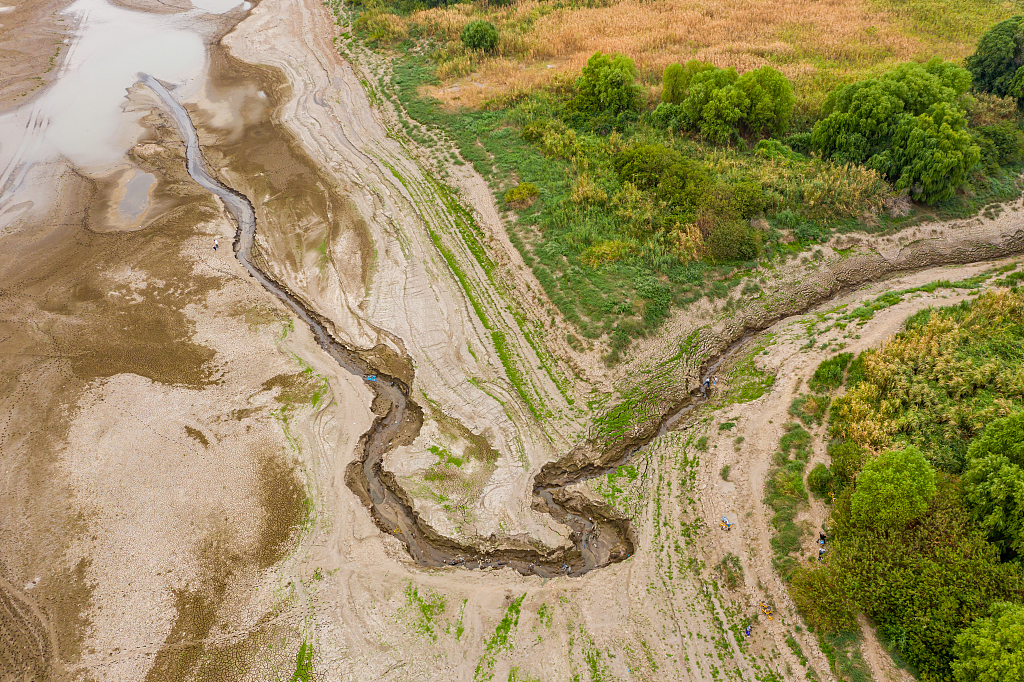Climate change is intrinsically a water crisis. We see melting icebergs, rising sea levels, floods and droughts across the world, all of which are impacted by climate change. Climate change is exacerbating both water scarcity and water-related hazards. According to UN-Water, around 74 percent of natural disasters between 2001 and 2018 were water-related, and that number tends to increase.
“We analyze meteorological data of main cities in China in the past six decades, and find that the frequency of intense rainfall in most cities has increased along with the rising temperature,” said Zhao Yong, the vice president of the Department of Water Resources at China Institute of Water Resources and Hydropower Research (IWHR).

The record rainstorm hit Zhengzhou City, central China's Henan Province, July 2021. /CFP
The record rainstorm hit Zhengzhou City, central China's Henan Province, July 2021. /CFP
Aside from that, in 2022, the Yangtze River experienced the most severe meteorological and hydrological drought in the basin since 1961, affecting agricultural production, drinking water supply, energy production, and the environment.
According to the Changjiang Water Resources Commission of the Ministry of Water Resources, droughts are more likely than floods in the Yangtze River basin during this year's flood season (April to October). From June to August, precipitation in the Yangtze River basin will be relatively low. Droughts are expected in the river's middle and lower reaches, as well as the region north of the Yangtze River.
"To prepare for the coming droughts, first, we have to improve the drought-relief engineering system that consists of water storage projects, water diversion projects, water lifting projects, and water diversion projects. China has built over 98,800 reservoirs so far, with a total storage capacity of 903.5 billion cubic meters," said Lv Juan, the deputy director of the Research Center on Flood & Drought Disaster Reduction of the Ministry of Water Resources.

The bare river bed of the Yangtze River in Wuhan City, central China's Hubei Province, September 2022. /CFP
The bare river bed of the Yangtze River in Wuhan City, central China's Hubei Province, September 2022. /CFP
Lv added that the non-engineering system that centers around four precautionary measures, "forecast, early-warning, drill, pre-arranged plan," also shows potential in safeguarding water security. To tackle last year's drought in the Yangtze River basin, China strengthened the monitoring and forecasting of rainfall, water, drought, and salty conditions, gaining time for precise scheduling and drought-relief deployment. Her team also created a drought monitoring and early warning system for Hunan Province in central China, which played a crucial role in the province's drought relief works last year.
Besides, China will push forward the follow-up construction of the South-to-North Water Diversion Project in 2023 and accelerate the building of the national water network as part of efforts to improve the country's capability to safeguard water security.